Lection 5. Arrays презентация
Содержание
- 2. Arrays In order to understand possibilities features of treatment of
- 3. Description and initialization of array in the program Special facilities
- 4. Description and initialization of array in the program 1. By enumeration
- 5. Description and initialization of array in the program 1. By enumeration of
- 6. Description and initialization of array in the program Dignity of directive
- 7. Description and initialization of array in the program As a result
- 8. Description and initialization of array in the program 1. By enumeration of
- 9. MODEL small MODEL small STACK 256 .data mes db 0ah,0dh,'Масив- ','$' mas db 10 dup
- 10. Access to the array cells During work it is necessary
- 11. Access to the array cells So, the same storage area can
- 12. Access to the array cells The same considering can be
- 13. Access to the array cells In an assembly language the
- 14. Access to the array cells Lets once again we will appeal
- 15. Access to the array cells Let this sequence of numbers be
- 16. Access to the array cells In general case for the receipt
- 17. Access to the array cells Architecture of microprocessor gives comfortable enough
- 18. Access to the array cells For example :
- 19. Access to the array cells The base-displacement indexed addressing with displacement
- 20. Access to the array cells A microprocessor allows to scale an
- 21. MODEL small MODEL small STACK 256 .data ;text mes1 db ‘not equal 0!$',0ah,0dh mes2 db '
- 22. dec cx dec cx jcxz exit ;cx=0? Yes — go to exit jmp compare ;no
- 23. A few words about the agreements If for description of address
- 24. A few words about the agreements If for the task of
- 25. A few words about the agreements If for description of address
- 26. A few words about the agreements We will notice that the
- 27. MODEL small MODEL small STACK 256 .data N=5 ;number elements of array mas db 5 dup
- 28. Скачать презентацию
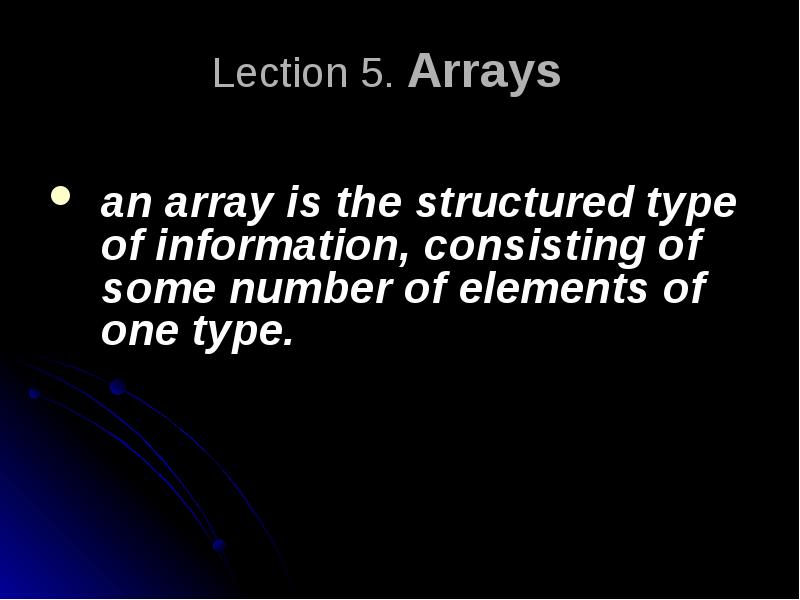




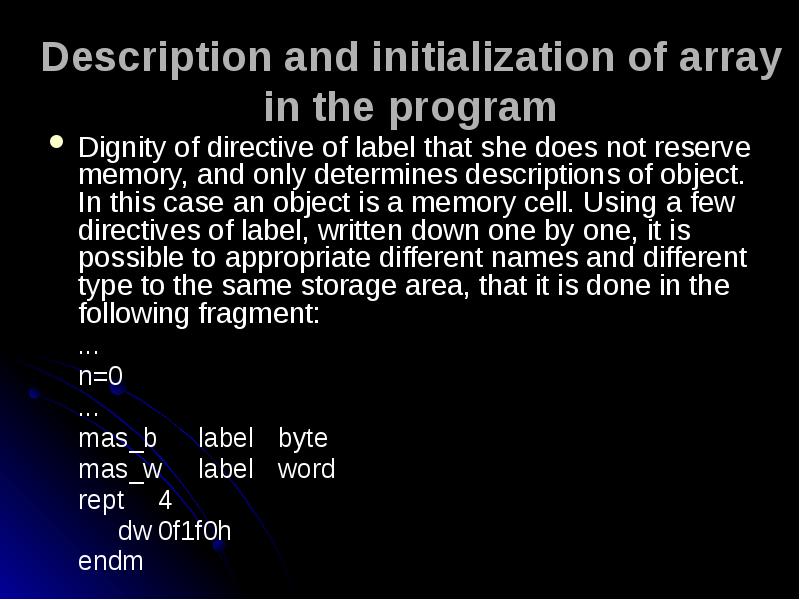

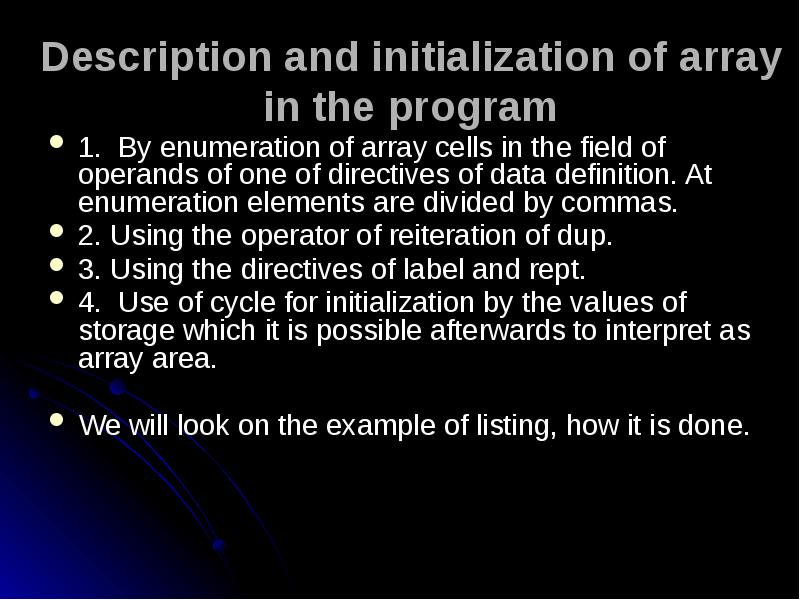

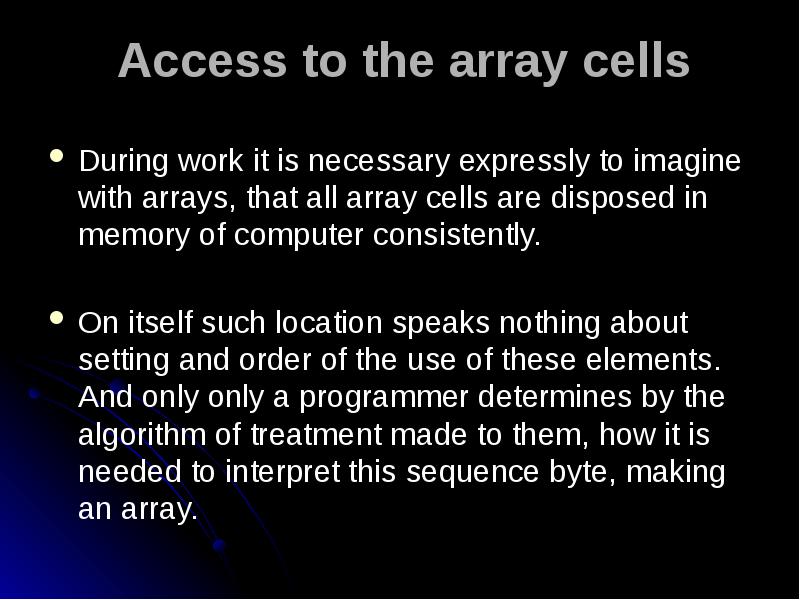
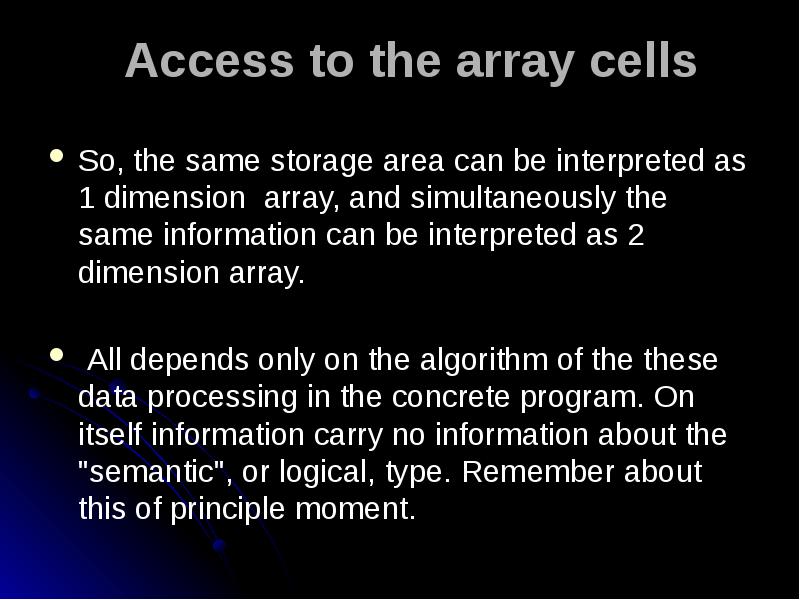
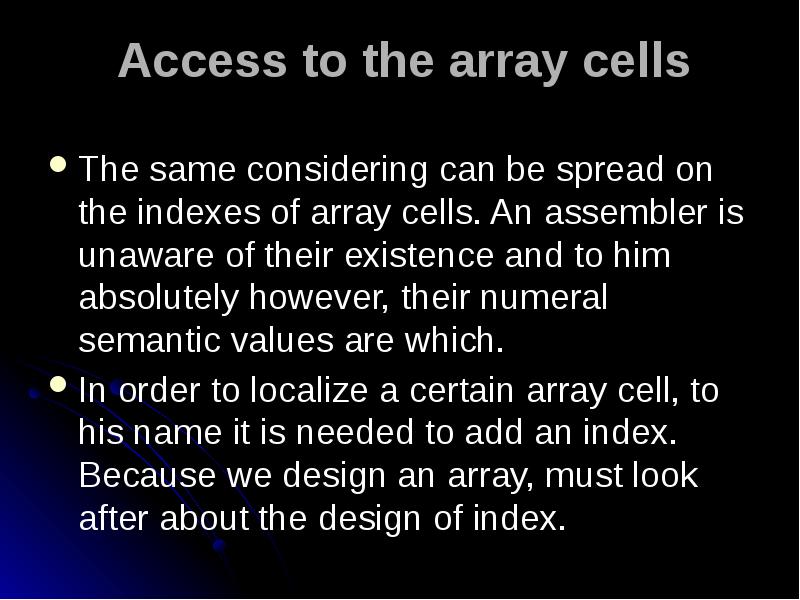
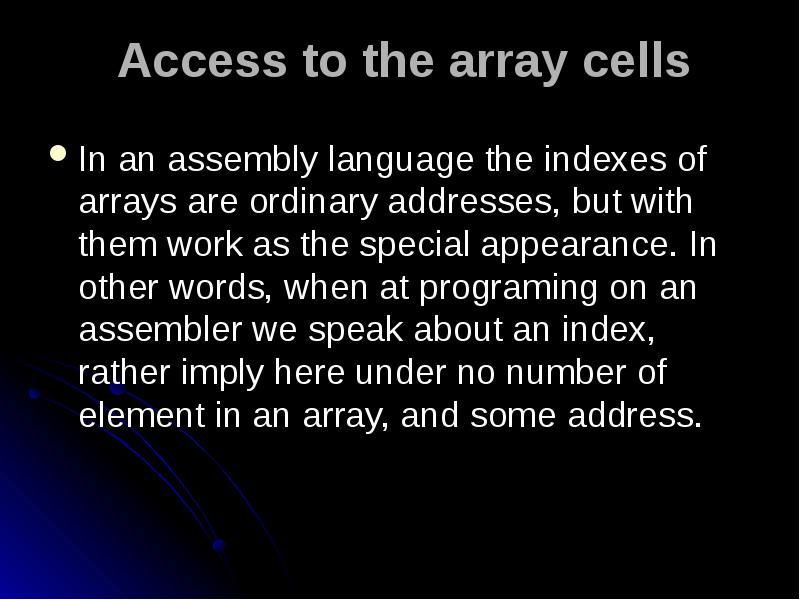
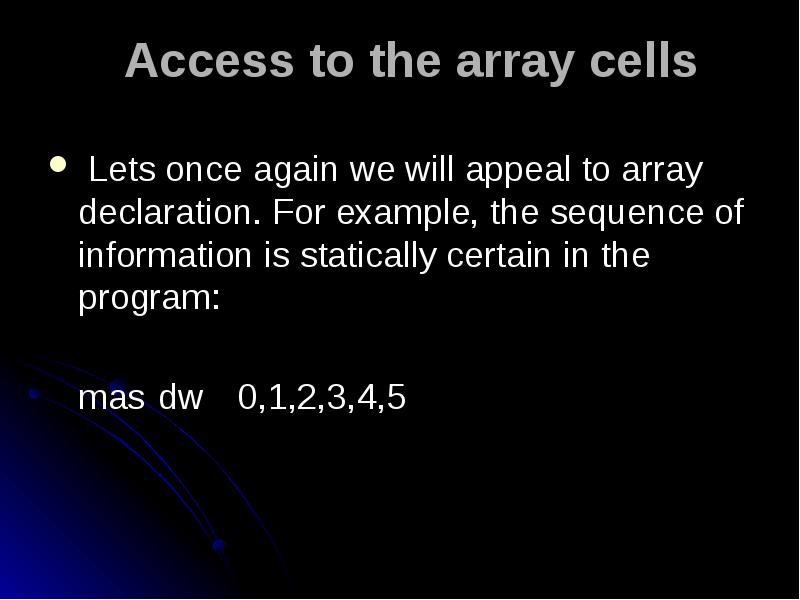

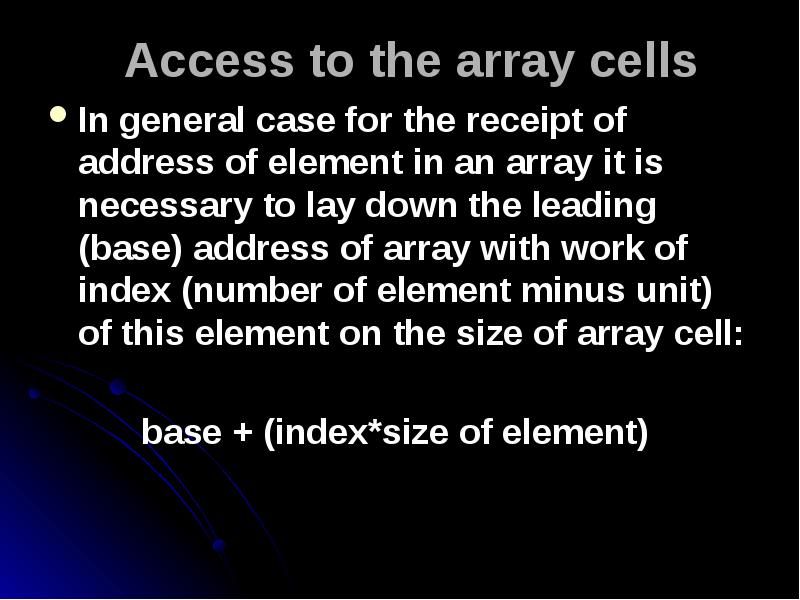
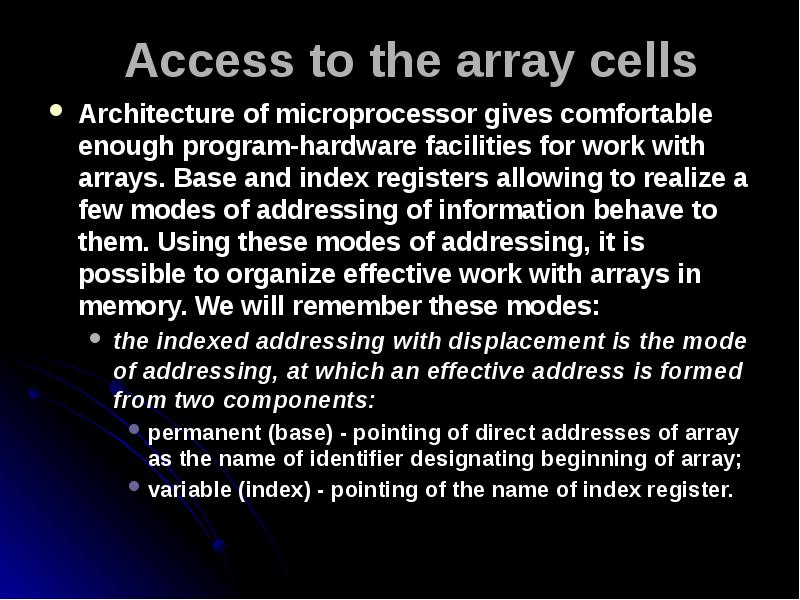
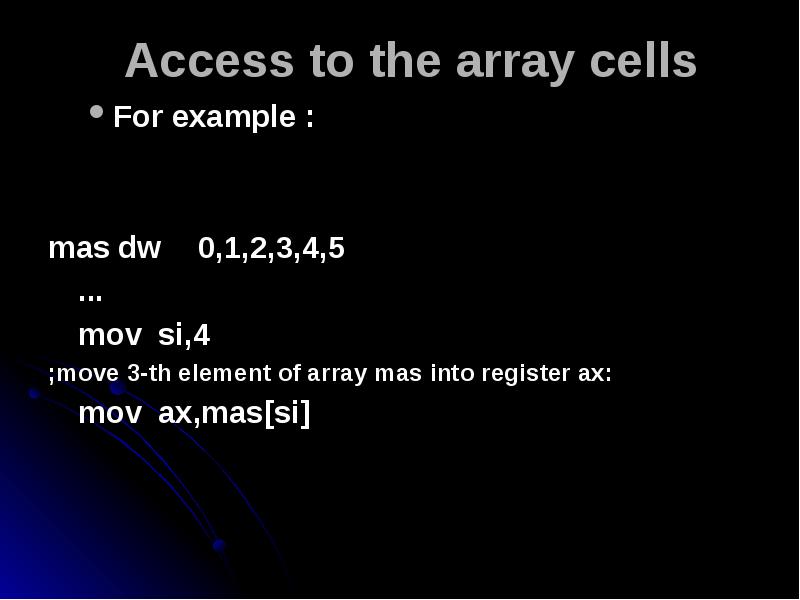
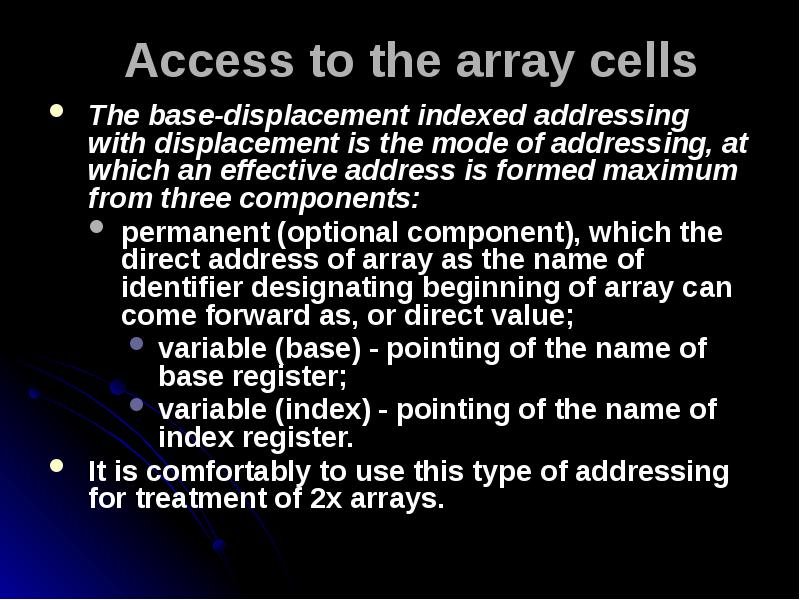
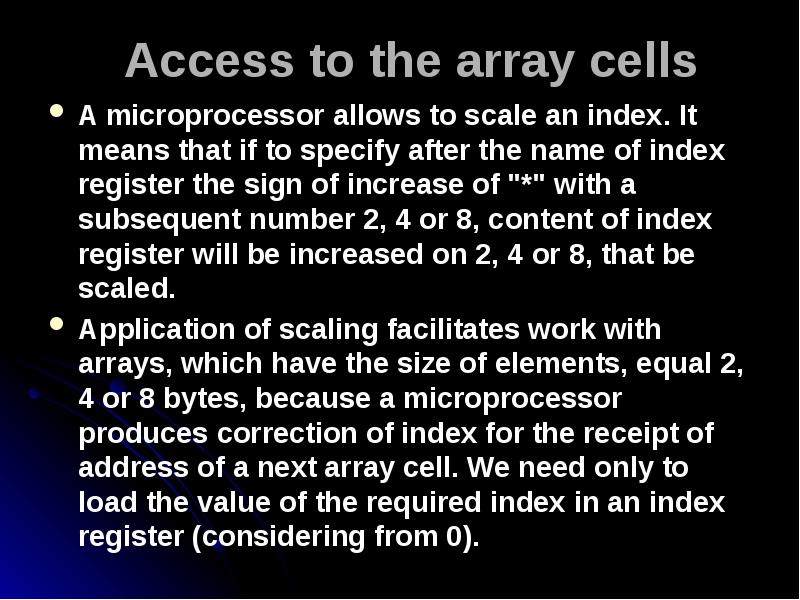
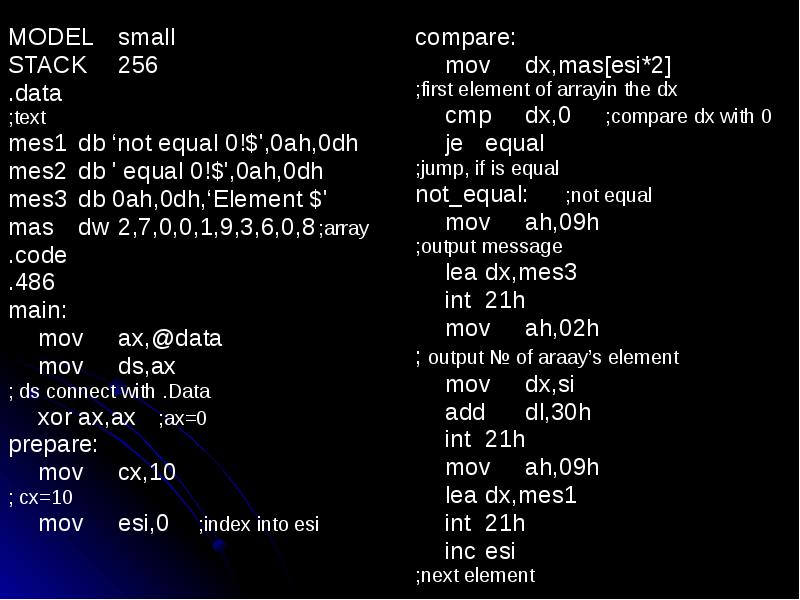
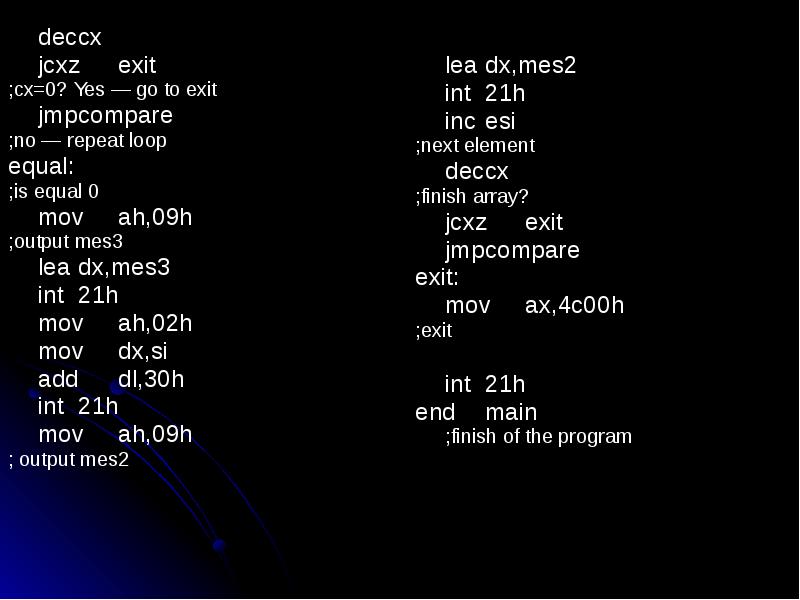
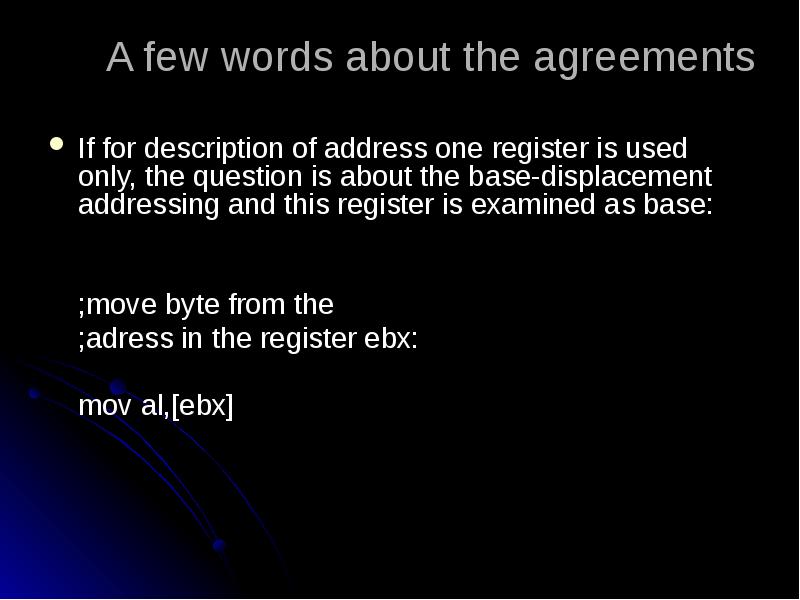
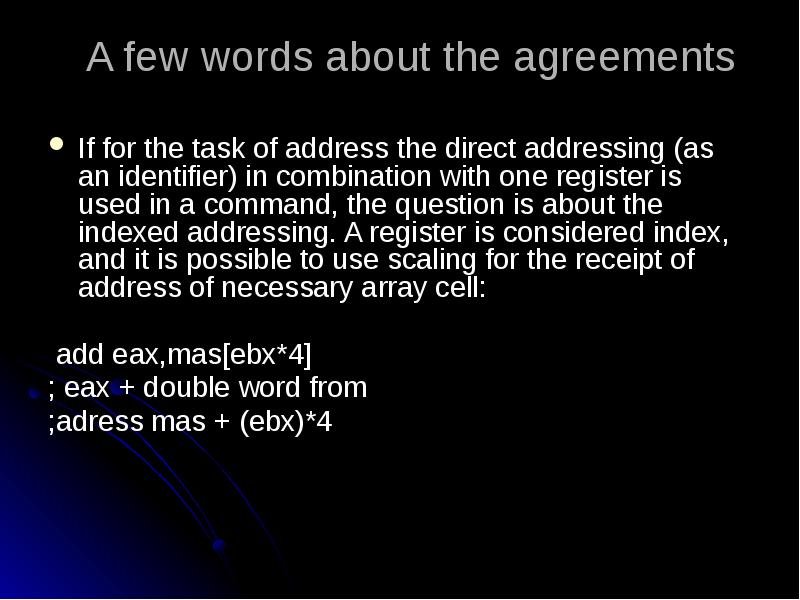
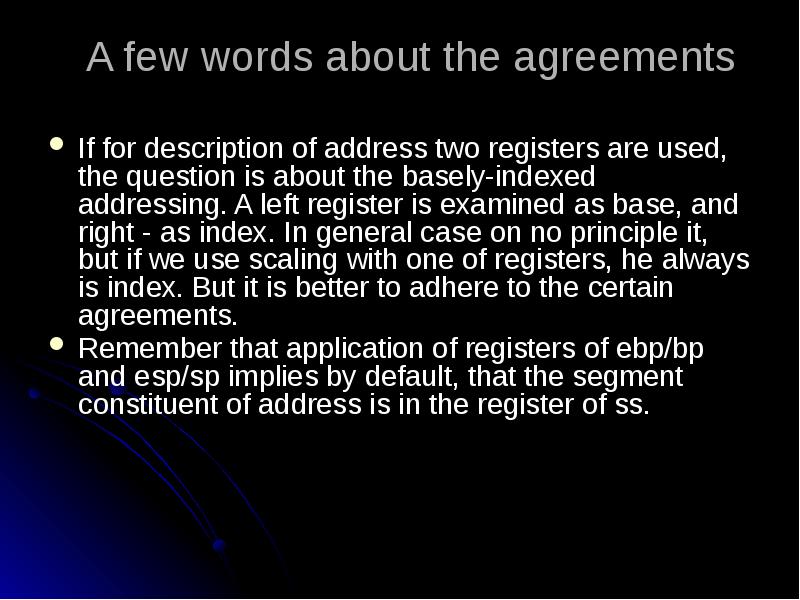
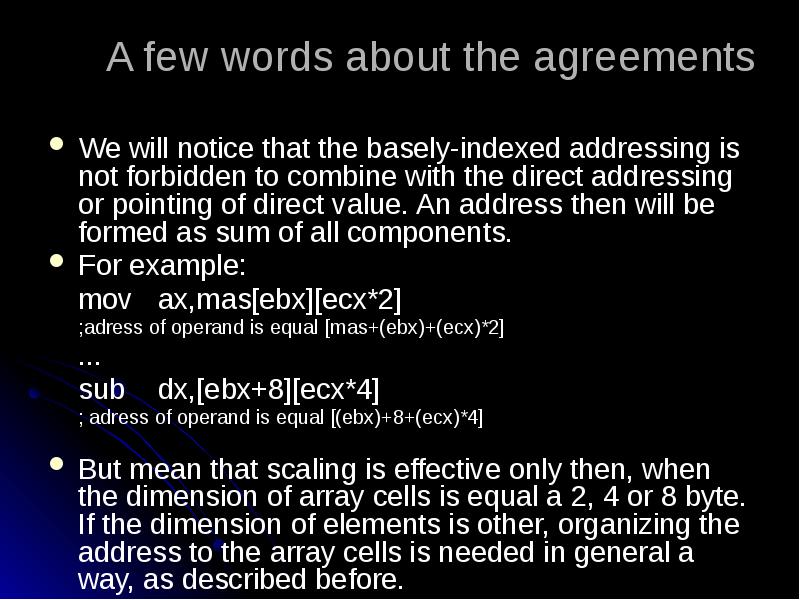

Слайды и текст этой презентации
Похожие презентации





























